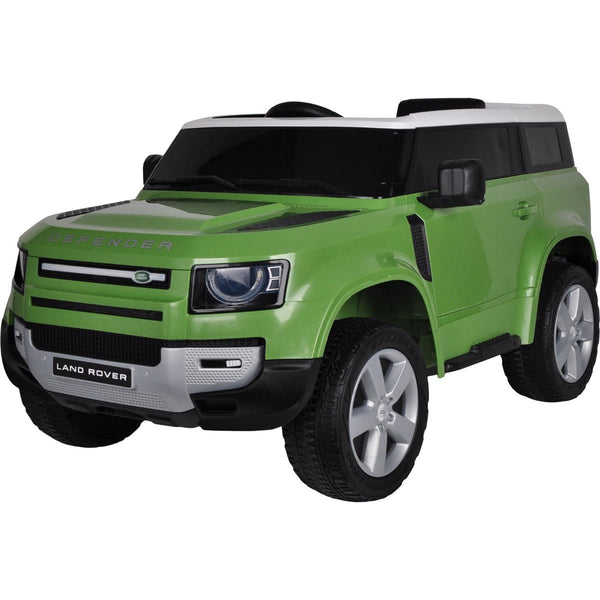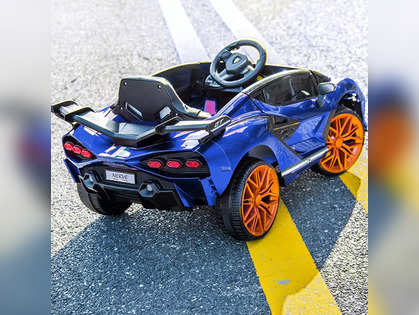It's crucial to think about the size, age and development stage of your child when deciding a ride-on car for them. This will ensure they're secure and have fun with the experience. The following factors must be taken into consideration:
Younger Toddlers (1 to 3 years old) Consider riding-on vehicles specifically made for this age group. These vehicles have simple controls, a low design that's stable and has a steering wheel or button. Ride-on cars that have an extended base provide stability and lower the possibility of them tipping.
Children who are older (3or more years old) As children get older, they are able to handle more advanced ride-on cars that have added features and controls. Look for cars that have an adjustable seat and weight capacity that is larger, and more interactive features such as lights, sounds, or music. For safety, search for vehicles with an adjustable speed or parental control to allow for different levels of skill.
Size
Height and Weight: When selecting a car for your child, it is important to be aware of their size and weight. Choose a car with an appropriate height for the seat and weight capacity that can comfortably accommodate your child's size. Avoid cars that are too small or too large, as they may be uncomfortable or unsafe to ride.
Comfort and Legroom Ensure that your child sits comfortably and has sufficient legroom in the ride-on. Be sure to check the dimensions of the car and ensure it's appropriate for your child's.
Developmental Stage
Motor Skills: When deciding on the ride-on vehicle for your child be sure to consider your child's coordination skills and their motor skills. For toddlers, a simpler control might be required to steer. But, older kids can use interactive features and more complex controls.
Ride-on cars help build confidence and Independence - When children learn to drive and navigate, ride-on cars foster confidence and aid in developing their independence. Choose a vehicle that will allow your child to learn how to steer, accelerate and brake independently. This will build their confidence and motor skills as they progress.
Interest and Engagement Be aware of your child's preferences and interests when choosing the best ride-on car for them. Select a car that's themed, has colors or features your child will enjoy regardless of whether it's a classic car. a sportscar, a truck, a cartoon character and so on.
Take into consideration your child's size and age, as well as their developmental stage to choose a car that is safe, comfortable and engaging. This will provide many hours of fun and learning for your child to play and explore. View the top rated kids ride on cars for website examples including riding digger, ride on toy, toy cars, electric ride on, childrens digger, toy car, two seater childrens electric cars, electric ride on, toy ride, digger ride and more. .

How Do You Keep And Assemble A Kid's Ride-On Car?
Making and maintaining toys for ride-ons for children is crucial for their safety, performance and longevity. Here are some common assembly and maintenance needs for kids' ride-on vehicles:
The majority of ride-on cars are partially assembled at the time of arrival and require some assembly. This usually involves attaching the components such as the wheels as well as the seats, steering wheel and other accessories according to the manufacturer's instructions.
Install the components in accordance with the instructions. Use the hardware and tools included to complete the procedure.
Cleaning -
To ensure that the car you ride in to look its most attractive and function efficiently, regular maintenance is required. Clean up the exterior surfaces using the help of a soft, damp sponge or cloth dipped in mild soapy water. This will remove dust, dirt and other debris.
Be aware of areas that are susceptible to accumulation like the wheels, tire, and undercarriage. To get rid of stubborn dirt and grime make use of a toothbrush or brush to access those areas that are difficult to reach.
Avoid harsh chemicals and cleaners that are abrasive, since they may damage the paintwork or electronic components.
Battery Care
The maintenance of the battery is essential if the ride-on is powered by rechargeable batteries. Proper battery care ensures performance and extend the battery's lifespan. It is simple to maintain your battery by following these tips.
The battery must be fully charged prior to the first time use and again following each use to ensure maximum runtime.
Beware of charging your battery too much or leaving it hooked up to a charger for an long time. Both could damage the battery and reduce its lifespan.
If not in operation make sure to keep the car's battery and ride-on vehicles in a place that is dry, cool, and away from intense temperatures or direct sunlight.
Examine the battery's terminals on a regular basis for signs of damage and corrosion. Clean the terminals with a cleaner or wire brush if necessary.
Replace it if the battery isn't holding a full charge or has signs of deterioration or damage.
Tire Maintenance -
Inspect the tires frequently to check for signs like wear, damage or the loss of pressure. If needed, inflate the tire up to recommended air pressure using a bicycle compressor or pump.
Look for debris and foreign objects in the tread pattern that may cause punctures. Removing obstructions, and replacing damaged tires or fixing them if required.
Lubricate the wheels and axles bearings regularly to ensure a smooth and efficient rotation. reduce friction.
Sometimes, repairs or replacements are needed
Wear and tear, or damage from accidents can cause parts of ride-on cars to require replacement or repair.
Be on the lookout for indications that your system is malfunctioning or deteriorating, including unusual sound or behavior, power loss, or other anomalies. For troubleshooting or repair options, consult the manufacturer's instructions.
To prevent further damage, replace damaged or worn components as soon as you can to ensure safety and functionality.
Following these assembly instructions as well as maintenance guidelines will ensure that your child has hours of fun while playing safely. See the top rated discover more on kids ride on cars for more examples including toy cars, ride on toy, car for toy, childs ride on car, car on ride, childs ride on car, childrens electric ride on, toy a car, car electric ride on, cars pedal car and more. .

What Should I Consider Before Buying An Electric Kids Car? Pros And Cons?
There are many factors to consider when selecting an electric kid's car. Here are a few important considerations and information about price as well as size and pros and cons.
Consider the age and size of your child when choosing the best electric car for your child. Children who are smaller or younger could opt for compact, light cars. However, older children and people with larger bodies may need larger vehicles that can accommodate them comfortably.
Car Size and Weight -
Electric cars are available in various sizes. They can range from tiny, micro-sized vehicles to larger-scale versions of real vehicles. The weight and size of your child's vehicle must be determined by the age of your child, their size and strength. Consider the space available for play and storage.
Price Variation
The prices of electronic kids' automobiles can differ widely based on factors like size, features, brand and the quality of construction. Prices vary from $50 to $200 for miniature replicas, and high-end licensed replicas range from $200 to $800.
Pros and cons
Pros -
Children's electric cars offer endless hours of fun, imaginative play and the chance to control their own car.
Motor Skill Development: Driving an electric vehicle can help develop spatial awareness and fine motor skills in children.
Outdoor Play – Electric cars encourage outdoor activity and play. This promotes exercise and exploration.
Realistic Features- Many electric children's vehicles have realistic features, such as working headlights as well as horn sounds. They also have support for MP3 players, which improves the overall experience.
Cons
Costs - Electric cars that are of high quality for kids can be costly especially if they're licensed replicas.
Battery Life - Electric cars depend on rechargeable batteries to provide power. These batteries might have a limited time of operation and require frequent recharging.
Safety Concerns: Electric cars have a myriad of safety risks like accidents, falls, or the possibility of entrapment, if they're not operated under the supervision of an adult and in a responsible way.
Maintenance and Assembly Some electric vehicles require assembly on arrival, and also regular maintenance such cleaning, battery care and sometimes repairs or replacements of parts.
Features and Accessories
Explore the available options for features and accessories to the electric cars of your kids, including horns that work, storage compartments, seatbelts and remote controls for parents. Choose a car with the features and options that will best match your child's needs.
The final decision on the best electric vehicle for your child will be based on factors such as their size, age, and interests, and your budget. Be sure to compare the different models, go over them and weigh the advantages before deciding. View the recommended Mercedes kids car kidscars.co.uk tips for site examples including kids electric cars, riding digger, toy car, two seater childrens electric cars, race car toy car, pedal car, childrens electric cars, ride ons, 2 seater electric cars, kiddies cars and more. .
